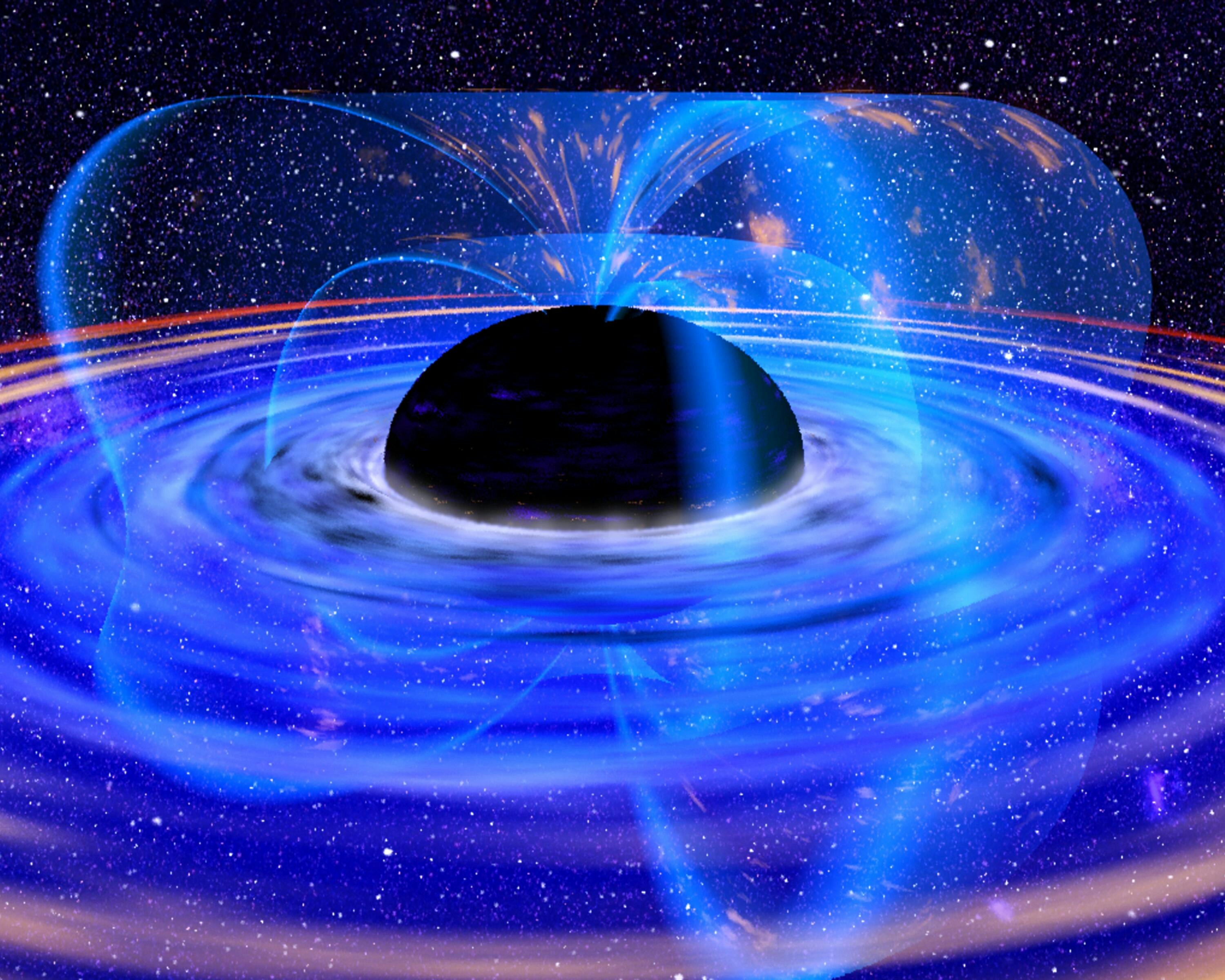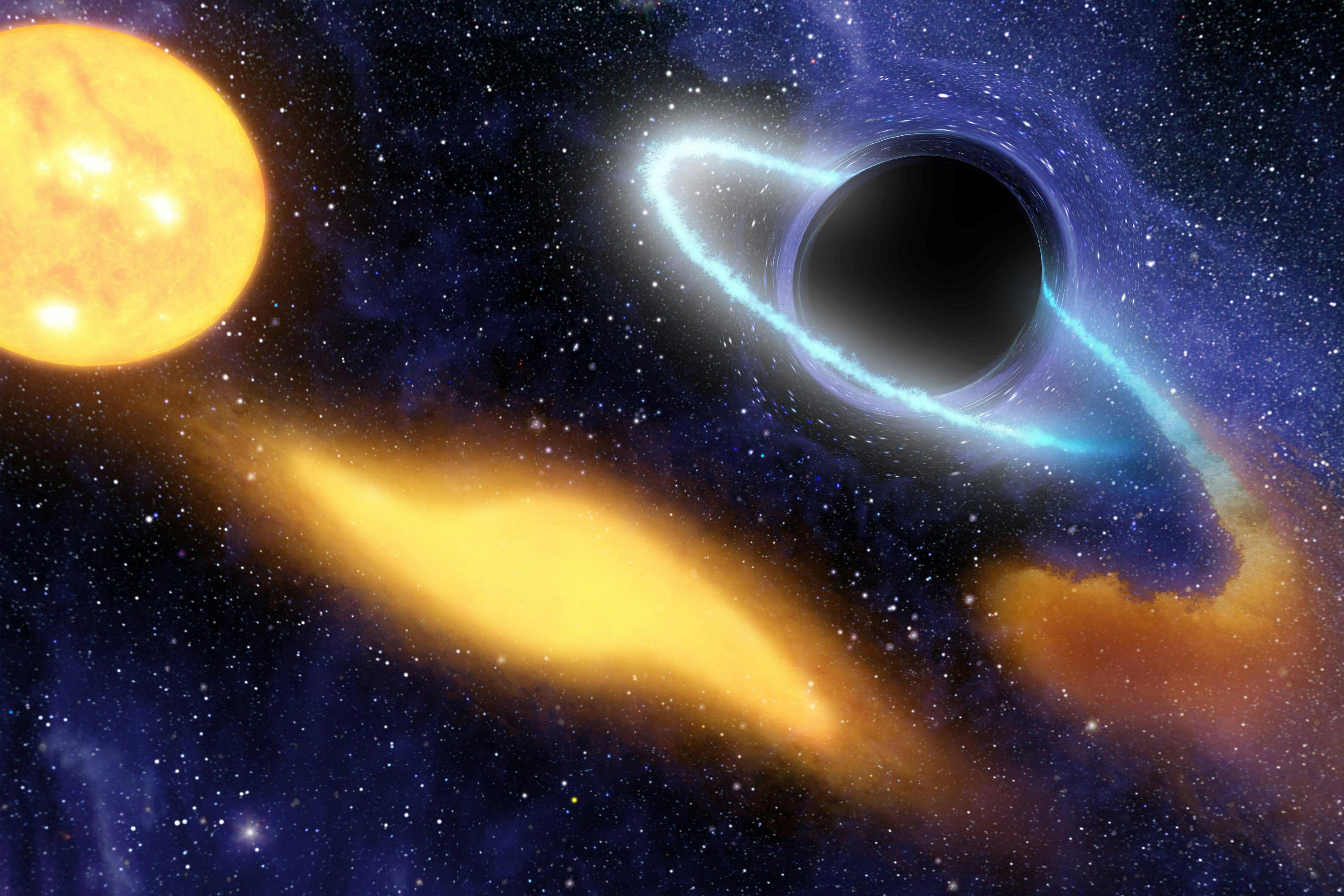
We think of supermassive black holes as gorging cosmic monsters, swallowing up anything that gets too close, but according to a recent study, the supermassive black hole at the heart of a nearby galaxy called Circinus is actually a very picky eater.
Astrophysicist Takuma Izumi, of the National Astrophysical Observatory of Japan, and his colleagues used ALMA to take the highest-resolution look yet at the center of Circinus, and they found that the black hole only consumes about 3 percent of the gas that falls toward it. Radiation — released by material racing faster and faster as it spirals toward the supermassive black hole — pushes the rest of the gas back into the galaxy in fast-moving, turbulent streams. The researchers published their work in the journal Science.

“No, Thank You,” Says Supermassive Black Hole
Izumi and his colleagues used the Atacama Large Millimeter/submillimeter Array — 66 radio telescope antennas in the highlands of Chile — to map the flow of gas in the innermost region of the Circinus galaxy, 13.05 million light years away.
Specifically, they watched the innermost 1 percent of the galaxy, spanning a distance from about 325 light years to about 32.5 light years from the supermassive black hole., which is about 1.7 million times more massive than our Sun. That’s such a narrow area that it’s hard to see in much detail, but ALMA’s array of radio dishes let Izumi and his colleagues watch the action with about 1.6 to 8.5 light-year resolution. And what they saw was the black hole shoving away most of the gas that fell toward it.
The ALMA data revealed a messy, chaotic disk of gas swirling around the black hole. As gas falls inward from farther out in the galaxy, it ends up in what’s called an accretion disk: a spiral of material swirling around the black hole, accelerated to tremendous speeds by the black hole’s powerful gravity. Think of it as a highway at rush hour; things move in fits and starts, attempts to merge end badly, and ultimately nothing actually flows smoothly.
“That gas disk finally collapses to form structures such as spirals, bars, and small clumps,” Izumi tells Inverse. When clumps of gas bump into each other, they slow each other down – and that’s all it takes for them to fall inward toward the waiting maw of the black hole’s event horizon.
Every year, that fate befalls enough gas to make up between a fifth and a third of our Sun’s mass (which Izumi and his colleagues calculated by comparing computer simulations to their ALMA data). But only about 3 percent of that gas – 0.6 percent of the mass of our Sun – actually falls onto the black hole and adds to its mass. The rest gets shoved away again by radiation pressure from the black hole – radiation that’s released by particles moving at ludicrous speeds as they’re pulled inward.
“So, the black hole system has a well-designed system of self-regulation: black hole does not eat materials too much,” says Izumi.
Messy Eating Slows Down Star Formation
That could be the reason that galaxies with active supermassive black holes seem to form fewer stars than galaxies whose black holes have stopped growing. Izumi and his colleagues mapped that escaping gas and found that it flows in distinct currents – ionized gas, atomic gas, and colder, heavier molecular gas. Those flows of gas streaming back out into the central part of the galaxy could have interesting effects on how and where the galaxy forms new stars because they churn up turbulence in the clouds of cold molecular gas where stars tend to form.

A 2015 study suggests that turbulence makes star formation less efficient; the simple version is that it breaks up the large clumps of gas that would otherwise collapse to form stars. (Other studies have found that sometimes, turbulence can also compress clumps of gas, speeding their collapse into more massive stars; nature is complicated, and that’s part of what makes it interesting). But Izumi says that in the case of Circinus, the molecular gas flowing away from the black hole should reduce star formation, at least in the central region of the galaxy.
“But we need further careful analysis to study this topic because the gas circulation (fountain) that we observed is located at the center of the galaxy, not at the kilo-parsec scales,” Izumi tells Inverse. “Hence it remains unclear whether these outflows really impact the host galaxy-scale star formation.”
But if we imagine a universe in which supermassive black holes like the one in Circinus – or the one at the center of our own galaxy – were more efficient eaters, Izumi says it would probably be full of larger galaxies with more stars.
“If we turn off the self-regulation mechanism mentioned above (if the black hole is a more efficient eater), we will not see powerful feedback activity onto the host galaxy, as outflows will not be launched,” says Izumi. “Under this circumstance, galaxies can grow further and further because there is no negative AGN feedback on star formation anymore. So we will see an increased number of massive galaxies in that universe.”
What’s Next?
Meanwhile, in the universe we actually live in, Izumi and his colleagues’ recent study is just one piece of the puzzle around the cosmic monsters lurking at the heart of most galaxies. Not all supermassive black holes are identical: some are much brighter than the one in Circinus, outshining their whole galaxies; some have even thicker shrouds of gas and dust; some are much more massive, and others are much smaller.
“I would like to understand whether the same mechanism (gravitational instability) that we revealed in this work is commonly applicable to those different types of black holes,” says Izumi. “If yes, we can explain the growth of SMBHs in a physically unified manner.”







